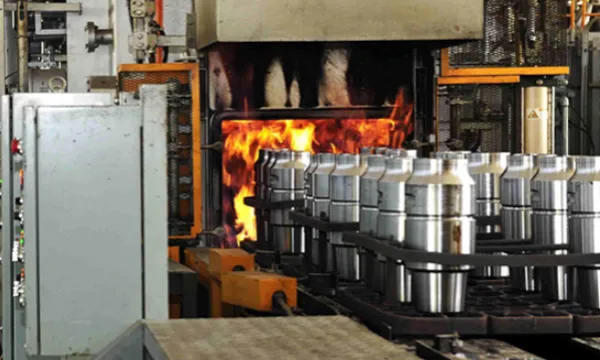Powder metallurgy products are now being used in an increasingly wide range of applications, and they offer significant advantages in replacing low-density, low-hardness and low-strength cast iron materials. heat treatment methods for powder metallurgy products include quenching, chemical heat treatment, steam treatment and special heat treatment.
1. Quenching heat treatment process
In the quenching heat treatment process, the relative hardenability of powder metallurgy materials is poor during quenching because they have more pores and their heat conduction is slower. In addition, the sintering density of powder metallurgical materials is directly proportional to the thermal conductivity of the material; compared with dense materials, powder metallurgical materials have better internal organization uniformity due to the different sintering processes, but there is some inhomogeneity in the smaller microscopic regions. Therefore, the time required for complete austenitization can be up to 50% longer, and the temperature and time required for complete austenitization increase when alloying elements are added.
In the heat treatment of powder metallurgy materials, some alloying elements such as nickel, molybdenum, manganese, chromium and vanadium are usually added in order to improve the hardenability. They act by the same mechanism as in dense materials, and can significantly refine the grain. When these alloying elements are dissolved in the austenite, they can increase the stability of the supercooled austenite and ensure that the austenite transformation is carried out during the quenching process, thus improving the surface hardness of the material and increasing the hardening depth. In addition, powder metallurgy materials need to be tempered after quenching, and the control of the tempering temperature has an important effect on the material properties. Therefore, the tempering temperature should be determined according to the characteristics of different powder metallurgy materials to minimize the effect of tempering embrittlement on the properties. Generally speaking, tempering treatment can be carried out in air or oil at a temperature of 175-250℃, and the tempering time is 0.5-1.0 hours.
2. Chemical heat treatment process
There are several forms of chemical heat treatment of powder metallurgy materials, such as carburizing, nitriding, sulfurizing and multiple co-infiltration. In chemical heat treatment, the depth of hardening depends mainly on the density of the material. Therefore, corresponding measures can be taken in the heat treatment process.For example, in carburizing, if the density of the material is greater than 7g/cm3, the time can be extended appropriately. The wear resistance of powder metallurgy materials can be improved by chemical heat treatment. The inhomogeneous austenitic carburizing process of powder metallurgy materials can make the carbon content of the surface of the penetration layer of the treated material reach more than 2%, and the carbides are uniformly distributed on the surface of the penetration layer, thus effectively improving the hardness and wear resistance.

